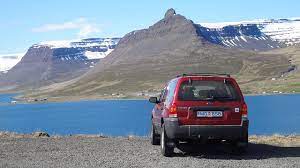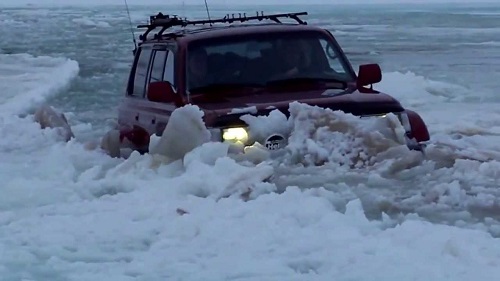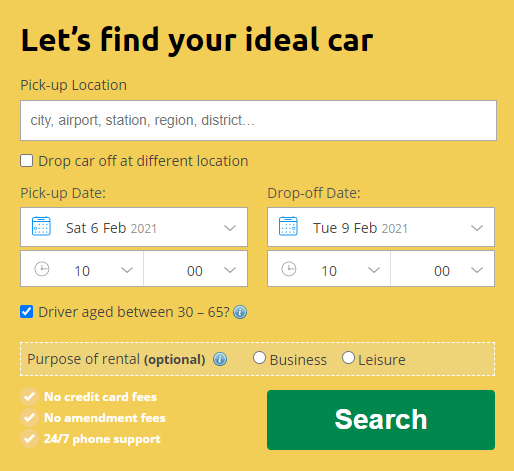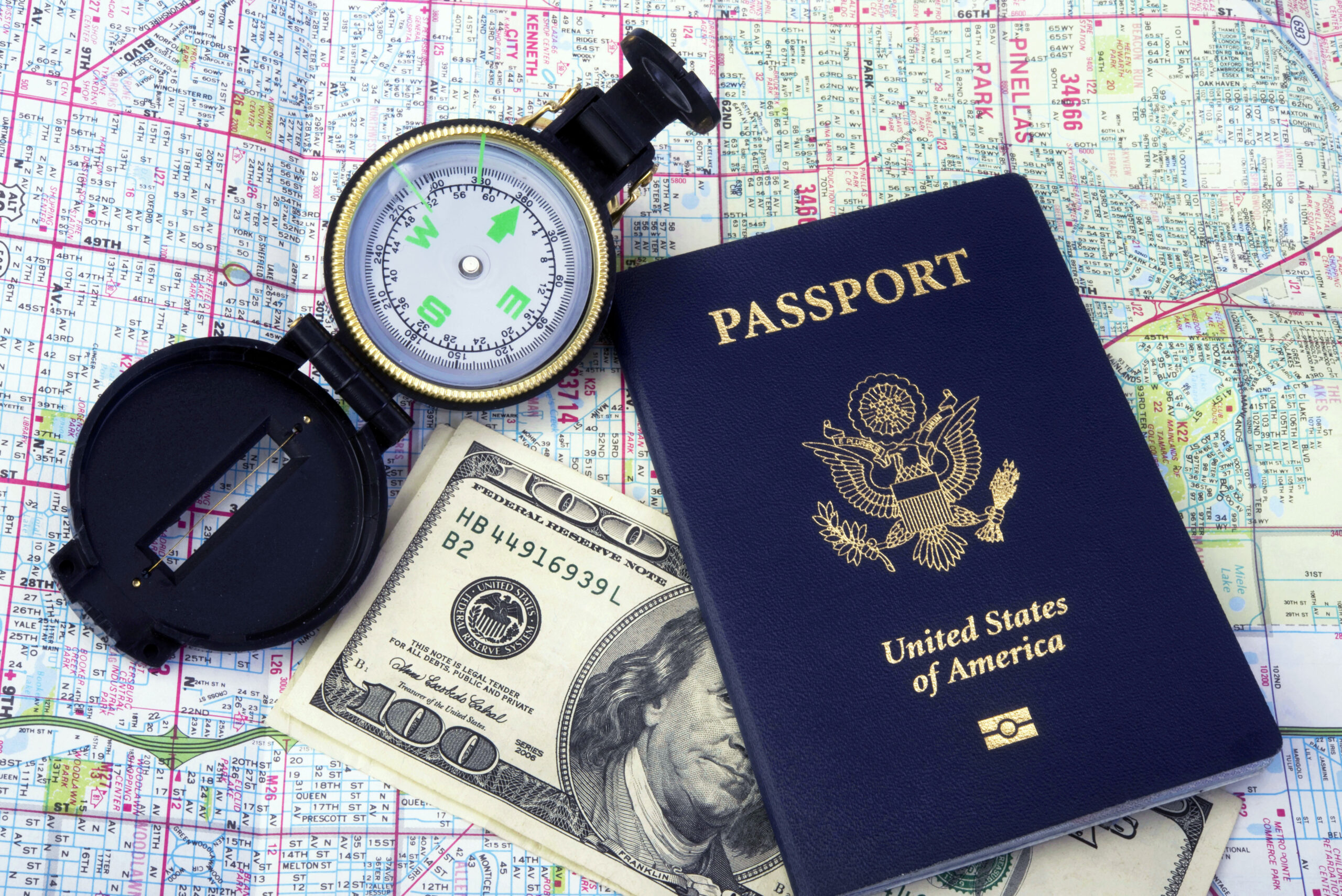Yes. Insurance for a single day is available.
The Ultimate Guide to Car Rental in Iceland

If you are planning a trip to Iceland do not give up car rental, because the public transportation in Iceland is very limited! We have gathered everything you need to rent a car in Iceland.
Renting a car in Iceland can be much simpler and cheaper than you thought. – Using a price comparison engine will save you hundreds of Dollars in comparing prices between all the reliable car rental providers in Iceland. The sophisticated price comparison engine for car rental rates is automatically updated at all prices at any car rental company in Iceland that is considered reliable and provides customer service in English, and it will find the cheapest prices for a variety of models, including 4X4 rentals. The many car rental companies in Iceland – just fill out the form, select Iceland in the country field, then select the city in Iceland where you would like to get the rental car – Reykjavik the capital or Husavik, Hopen, Akuriri, Agilstadir, Keflavik or other cities in Iceland. Enter the dates you are interested in booking a car rental in Iceland and click “Search”
Holiday in Iceland – more information for the traveler
Iceland with children – the complete guide for family trips
Car rental in Iceland – general information
The Scandinavian island is an attractive destination for the traveler. If you really want to experience Iceland and the amazing views of the special island you must book a car rental in Iceland – this is the best and cheapest way to travel in Iceland. outside major cities such as the capital city Reykjavik (Reykjavik), so car rental is the most logical way to travel in Iceland.
Iceland is not a cheap country but it has enough car rental companies to have good price competition, and a wide selection of rental vehicles suitable for driving anywhere in Iceland – including SUVs, SUVs, four-wheel drive, luxury cars and jeeps. It is advisable to take a 4 on 4 vehicle because Iceland is a destination where a trip is usually combined with a lot of off-road driving.

Many people mistakenly think that you can travel in Iceland as in any other country, by bus or train, but Iceland is a small country with less than half a million inhabitants and the vast majority have a car so outside the city bus system of Reykjavik the only buses are for tourists only – that is, tours Guides coming out of the tourist centers and hotels – and their prices are so high that it is already better to rent a car.
If you are traveling to Iceland in a group of 2 or more travelers (that is, do not fly to Iceland alone) travel will be cheaper for you in a rental car than in tourist buses, not to mention convenience and privacy. Driving in Iceland is very easy and there is not much traffic on the roads.
Important tips for car rental in Iceland
Book online : The best prices you will find on car rental in Iceland are online, and the longer you book before you arrive in Iceland, the cheaper prices you will get – use a price comparison engine to find the best price for the right car for you.

Book a car rental in Iceland to Keflavik Airport – This is Iceland’s airport which is considered the airport of the capital Reykjavik but is actually an hour’s drive from the capital, that is – if you do not rent a car you will have to spend between 15-50 euros each way just to get in and out From the airport to the capital, so Keflavik Airport is the best place to rent a car in Iceland as it is better to rent the car from the airport and save the cost of the bus or taxi from the airport to the hotel in Reykjavik.
Waive the Super CDW offered at the rental desk – The price of the car rental will include CDW coverage. However, if the vehicle is damaged during your rental period, you are obligated to pay the ‘excess’. The car rental company will offer you to purchase Super CDW coverage that eliminate the excess to zero. Super CDW offered by the rental company may double your rental cost. This is where our car hire excess insurance comes into place. Our car hire excess waiver policies will save you up to 70% compared with the rental company’s offer.
See How Much You Can Save on Your Car Rental Insurance
Get StartedVolcanic sand and volcanic damage insurance coverage – In the event of a volcanic eruption on the island, we recommend adding insurance coverage for vehicle damage caused by volcanic ash. This coverage will reduce the deductible in the event of such damage, from the full amount to approximately 100,000 Icelandic kronor (approximately USD 1ת000). CarInsuRent also offer Gravel Protection and Sand & Ash protection, which are highly recommended when you rent a car in Iceland.
Do not buy theft insurance – Car thefts in Iceland are very rare and the chances of this happening to you are very low, if there is a country in the world where you can give up theft insurance it is Iceland.
Consider the car rental period: In principle, the longer the car rental period, the lower the price per day.
Plan the dates of the trip in Iceland: During July – August prices in Iceland are high but on September 1 the tourist season in Iceland ends and the “quiet season” begins in terms of tourism that lasts until May 31 – during this period car rental prices in Iceland drop significantly – up to 35 euros per day compared to 85 Euros a day!
Fuel in Iceland:
As in most areas of trade in Iceland, gas stations also use only a credit card. Across Iceland there are many unmanned gas stations that will require payment by credit card only, so it is advisable to prepare accordingly.
Refueling: When you finish renting a car in Iceland and return the vehicle to the company, be sure to fill the fuel tank first – in principle, if you have not filled the tank by the end, the company will do it itself and charge you a credit card at rates 3 times higher than the gas station.
Driving in Iceland
The landscapes and road conditions in Iceland are very unusual relative to other destinations in Europe. Driving in Iceland is not usually difficult for those who are experienced in off-road driving but the views are distracting and in many seasons of the year it is winter driving in a snowy country. Because weather conditions can change abruptly and rain or snow can start to fall unexpectedly, meaning that unexpected rain or snow can cause sudden road closures or rivers overflowing and blocking passage.
If you are not sure that you have enough experience and driving skills to deal with driving in the highlands of Iceland – it is better to give up and stick to a fun trip in the lowlands of Iceland.
Before you travel in Iceland, gather up-to-date information about the area and the current state of the roads and weather. Gather as much information about the area as possible and start by finding out that the area you are traveling to is open – you can search for up-to-date information on the Internet or ask the hotel staff in Iceland where you are staying, or inquire at tourist information centers. It is also advisable to create a planned route and timetable for the trip and send it to someone in the country who can make sure everything is fine or know where you are supposed to be in case of stormy weather.
The main road in Iceland is Road 1, known as the “Ring Road“, and it is the main transport hub on the island connecting from place to place.
Driving rules in Iceland are slightly different from those used to. Care must be taken to drive carefully, as many of Iceland’s roads are unpaved and there is a danger of animals breaking into the road. The road system might be different from the one known in your home country, so it is important to obey the instructions and rules of the road.
Speed limits in Iceland
The speed limit in Iceland is usually 60 km / h in an interurban area, but on denser roads it is usually 50 km / h, and within localities, the speed is only 30 km / h. The highways in the rural areas of Iceland are divided into two types – on roads Gravel The speed limit is usually up to 80 km / h and on paved asphalt roads the maximum speed is usually 90 km / h – but pay attention to the signs.
Driving in Iceland – driving in the snow and crossing rivers
The special challenges of off-road driving in Iceland that are usually new to most drivers are snow driving and crossing rivers (without a bridge). Always be sure to drive according to road and weather conditions. If it snows the roads become very slippery, it is important to drive slowly and carefully. The weather forecast in the area before you go on a trip.
A unique challenge for off-road driving in Iceland is quite typical of crossing shallow rivers in a vehicle without a bridge. It can be dangerous, and if you are not sure you know how to cross the river while driving wait for a local car that will explain to you how to get around (Icelanders are very friendly and will happily help) or choose another route.
Please note that car insurance does not include water damage. Therefore, care must be taken when crossing river crossings with the vehicle. It is the driver’s responsibility to make sure that the route of the road is open and dry.
How old do you need to rent a car in ICeland?
You must be at least 21 years old in order to rent a car in Iceland! (If you are from Europe/North America or basically if your driving license are in Latin letters, International license are not required.
Roads prohibited for driving:
Driving with the rental vehicle is prohibited on roads marked with the letter F and on roads 35 and 550. Driving on these roads can result in heavy fines.
and in general Driving on unpaved roads is prohibited and damage caused to a vehicle as a result of driving on an unpaved road is not covered by insurance, so be sure to stick to the route intended for you.
Turning on lights:
Please note that it is mandatory to travel with active lights in all months of the year.
Winter driving:
In the winter season our recommendation is to stock up on water and food while traveling, as the weather is changeable and you should be prepared for that. On the other hand, the summer months are inviting and comfortable for a trip.
Your safety is important:
Fastening front and rear seat belts is mandatory while driving in Iceland. Any child between 13 kg (29 lb) should be secured in a forward-facing child seat.
Do not talk on the phone while driving. Drinking alcohol before driving is not recommended. The local law allow up to 50 mg per 100 ml of blood, and there is a duty to obey a breath test.
We encourage you to check the road.is website or Veður App. It provides the best report on the road conditions of your route.
We wish you a safe and enjoyable trip with the rental car in Iceland, the CarInsuRent team!
See How Much You Can Save on Your Car Rental Insurance
Get Started2 Responses
Leave a Reply
Travel Tips and Guides

Navigate the World: How to Get Your AAA's International Driving Permit Effortlessly
Gil Farkash

Top Tips for Stress-Free Renting a Car in USA: Your Ultimate Road Trip Guide
Gil Farkash

Essential Tips for Renting a Car in UK: Your Complete Guide
Gil Farkash
Frequently Asked Questions (FAQ)
No. We provide a single journey plan. You are covered from the time you pick up the rental car up to the time you return it or on the last date written on your Certificate of Insurance, whichever comes first.
No. You should purchase a policy before starting your travel.
Find the answers you’re looking for to the most frequently asked car hire insurance questions as well as other questions relating to our products and services.

I’m still learning from you, as I’m trying to reach my goals. I definitely liked reading everything that is written on your site.Keep the stories coming. I liked it!
You made various good points there. I did a search on the topic and found a good number of folks will go along with with your blog.